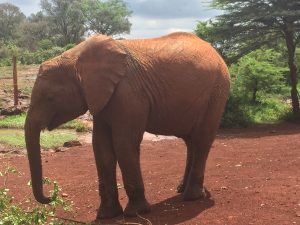
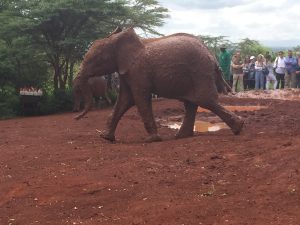
I have to be honest. I wasn’t entirely sure about this one and how politically correct it would turn out to be. There are some horror stories of similar orphanages in other countries which do more harm than good. However, the David Sheldrick Wildlife Trust seems to be somewhat different. Firstly, it has the most success at raising orphaned or injured elephants and returning them to the wild. Secondly, it has developed both a unique milk formula and a nurture approach which ensures the maximum survival rate of traumatised babies. Thirdly, the centre is only opened for an hour a day (from 11am until 12 noon) and the entry fee ($7) finances the costs of rescuing and caring for the elephants. Finally, it has a world renowned reputation for conservation leading initiative.
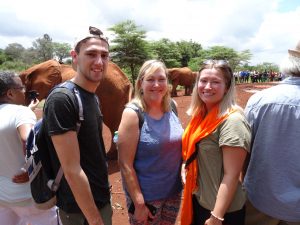
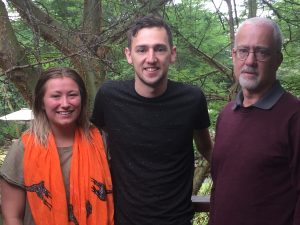
We were a party of four – Stuart, Ruari, (my son) Rebecca, (his girlfriend) and myself. Yet, we were still not entirely sure what to expect. It is very popular, very touristy and has a good reputation as a place worth visiting in Nairobi. I am one of those tourists who prefer not to go to places where other tourists flock! It is busy at the centre which is housed within the National Park, we find a spot around a large, roped area and wait.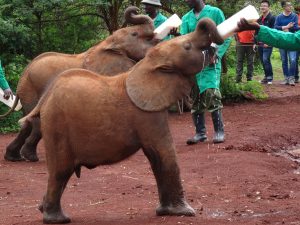 The babies come to be fed, with giant bottles of milk, every three hours. Soon we see them approach from the bush.
The babies come to be fed, with giant bottles of milk, every three hours. Soon we see them approach from the bush.
Some of them amble, some stroll, some do a sort of awkward jog and others are sprinting. There are 14 of them aged up to about 2 years old.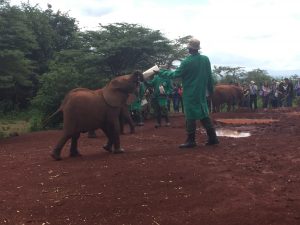
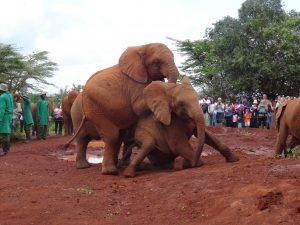
It is an amazing site. They gulp their milk in seconds – some can hold the bottles by themselves, using their trunks. Then they wander over to the ropes. We are so close we can touch them. They play, bump into each other, and try to eat leaves. There is a water tub beside us and they nudge each other out of the way to slurp water or use the rim to scratch their stomachs.
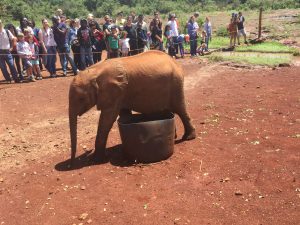
There are also some shadow muddy pools where a few babies lie down and enjoy a watery mud bath. The whole action is overseen by 5 wardens who carefully watch the proceedings. One of them explains about the projects, names the babies and tells their individual stories. It is interesting to discover the centre has a rapid response Rescue team. You should see the size of their truck! After half an hour, it is time for the first group of babies to leave. They line up and troop back to the bush, behind one of the keepers. It is like a scene from Jungle Book.
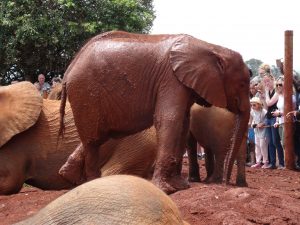
Another 13 elephants arrive. They are mostly between 2 and 4 years old. They are larger, livelier and friskier. They are fed 2 bottles of milk each and a few of them try to sneak some more! There is much more bumping, pushing and trumpeting. These guys are flexing their muscles a little. Many of them sit or lie down and it is incredible to watch how tricky it then is for them to get back on their feet – often having to roll on to their knees – and they are not even full – size yet. There are several that try to mount each other but more in dominance play than in sexual antics. There is also a lot of loud elephant farting which cause much laughter.
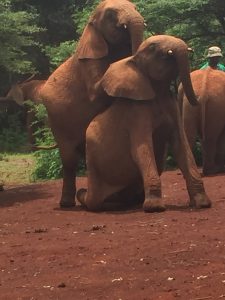
The hour is over far too soon. All our reservations about this trip are gone. It is a cracking way to spend a morning in Nairobi. We are hoping to see elephants in the Serengeti but it will definitely not be up close and personal like this.

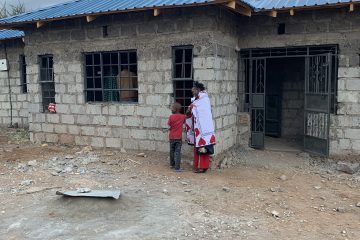
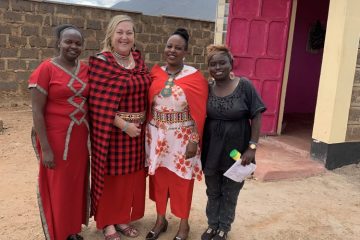
0 Comments